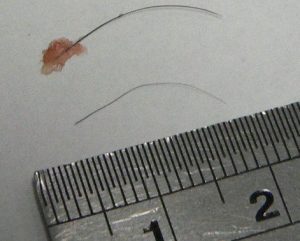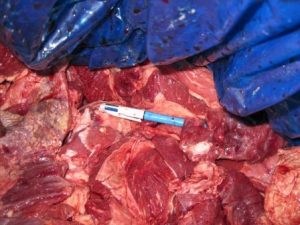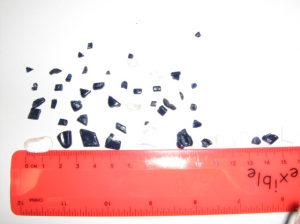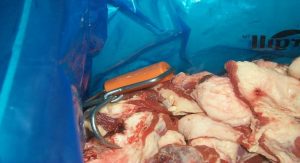Physical contamination
What are the types of physical contamination that can happen in a meatworks?
Meat products can be physically contaminated. The types of physical contaminants found in meat include:
- jewellery
- pens
- band aids
- make up – nail polish etc.
- boning hooks
- grass seeds
- metal shavings, staples
- rail dust
- dirt
How does physical contamination happen?
Workers can cause physical contamination by dropping items such as pens or jewellery into cartons of meat. Faulty machinery can cause metal shavings to fall onto the product. Rail dust can contaminate the product if cleaning programs are not good enough. The incorrect use of high pressure hoses can also blast dirt off the floor and all over a carcase. If the carcase is not dressed or gutted properly, then wool or hair can cause physical contamination. Parts of the guts can be left in the carcase such as liver under the thin skirt in cattle. This is regarded as physical contamination. Condensation is the water that drips down off the ceiling in slaughter floors, chillers and freezers. If this water falls on the carcase it can bring dust and dirt with it onto the meat.
Why is physical contamination a problem?
Consumers do not like finding physical contamination in food. Physical contaminants can choke them or break teeth, but it also tells them that the product was prepared in a plant where people did not take proper precautions. When the product is to be further processed into smallgoods or hamburger mince, physical contamination like boning hooks and bone chips can cause damage to processing machinery. If an export meat shipment has physical contamination such as grass seeds then the whole shipment or container load can be rejected at a big cost to the meat processor. Physical contamination is also an issue for retail butchers who have to trim carcases of wool, hair, dust, dirt, grease etc. These trimmings have to be thrown out and means lost dollars to the butcher. Most importantly, physical contamination can put more bacteria onto and into the product.




